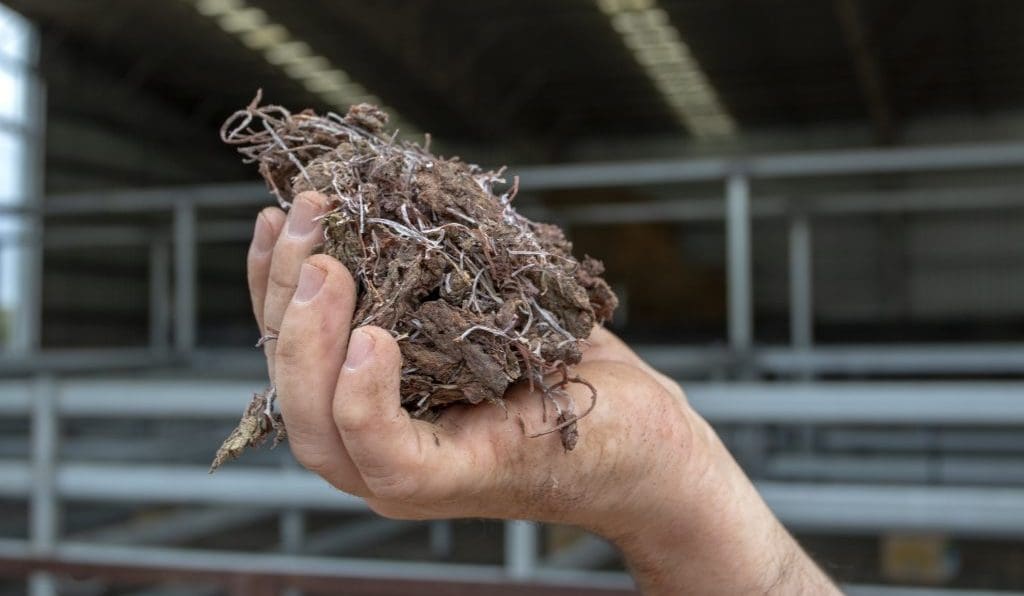THE developer of methane reducing feed additive, asparagopsis, has outlined its priorities for 2024 – with a focus on generating value out for producers using the product.
FutureFeed says the commercialisation of asparagopsis has generated more than $350m in investment from grants, equity funding and environmental prizes. Established by CSIRO in 2020, FutureFeed holds the global intellectual property for the use of asparagopsis as a livestock feed ingredient for significantly reducing methane.
While the company is looking towards more development this year, the product has faced some fresh criticism to start the year. Murdoch University PhD candidate Ben Camer-Pesci highlighted concerns about animal and human health – mainly due to exposure to bromoform.
“Upon reading further into the trials that had taken place, it became clear that the proposed technology was nowhere near a stage where it could be safely implemented,” he said.
“The motivation for this paper was driven by an urge to paint a clear picture of the current scientific standings of the technology, and to share this perspective with others. I hope that research groups around the world will be able to work together to tackle the problems highlighted by the paper to clearly conclude whether or not this technology is worth further investment.”
FutureFeed is standing by its product and chief executive officer Alex Baker said some of the early research papers were not well designed.
“More than ten years of peer reviewed studies have been published in the world’s most respected animal science journals, showing the safety and efficacy of asparagopsis,” Mr Baker said.
“Obviously, this groundbreaking area of science has garnered attention from scientists and companies around the world, several of whom have undertaken their own research. Unfortunately, in a small number of instances these studies weren’t well designed, resulting in feeding too much, or too little asparagopsis, or using a poor-quality seaweed product.
“We continue to be very optimistic that asparagopsis has an important role to play in addressing methane emissions from livestock given the progress being made in such a short time period.”
Focus on scaling up production
The FutureFeed Report to Industry 2023 – A Seaweed Solution to Address Climate Change provides a comprehensive review of investment, and research and development, in growing, processing, regulation and feeding of asparagopsis to beef and dairy cattle.
The report provides insights in to how FutureFeed and its nine licensee partners across Australia, New Zealand, United States, Europe and Canada, are progressing the production and adoption of Asparagopsis as a proven livestock feed ingredient for reducing methane in ruminant animals.
Mr Baker said from a standing start, the Asparagopsis industry has rapidly developed as its world-changing potential to address enteric methane has received global recognition and investment.
In 2024, FutureFeed is focused on:
- Actively developing an Australian enteric methane methodology with government to ensure livestock producers will be able to verify methane reductions from their animals using Asparagopsis
- Development of methodologies to support licensees and other industry participants to generate value from GHG abatement (by participating in carbon markets)
- Develop tools and frameworks to provide transparency to buyers and end consumers of Asparagopsis feed materials
- Selection of additional market participants through issuance of additional production licenses in key international markets
- Leading and contributing to scientific and on-farm trials creating more data regarding methane reduction, animal productivity, feed use efficiency, meat eating quality and evaluating feeding systems
- Engaging regulators to help support regulatory approvals in markets where required.
“FutureFeed believes 2024 will be a pivotal year for the development of Asparagopsis technology. Our licensees are moving from the experimental to the early stages of commercialisation, scientific knowledge of growing and feeding Asparagopsis is building, and industry is keenly watching our progress,” Mr Baker said.
- Beef Central is preparing a summary of where each of the seven methane-inhibiting feed additives are up to in development/commercialisation. Stand by for the report.
Source: FutureFeed/Murdoch University

